Whether it’s helping you negotiate the approach or providing flotation through sections of deep snow, snowshoes are an essential tool for mountaineering. Discover why you should add snowshoes to your mountaineering kit, along with a few other critical pieces of gear for your next trip.
Why Use Snowshoes For Approach Excellence
Even though snowshoes are too unwieldy to tackle a rocky summit ridge or vertical strip of ice, they’re incredibly useful for getting you there. Here are some of the notable ways that snowshoes will help you ace the approach on your next mountaineering adventure.
Some of the links in this article may contain affiliate links. When you make a purchase using these links, part of the proceeds go to Snowshoe Mag. These proceeds help us pay for site maintenance and article contributions. Additionally, as an Amazon Associate, we earn from qualifying purchases. Please see our disclosure for more details.
Light and Compact
Many mountaineers choose snowshoes for the simple reason that they deliver the lightest and most compact form of flotation available. For example, weighing just under four pounds, snowshoes like the tried-and-true MSR Evo Ascent will keep the approach manageable, allowing you to avoid post-holing in seemingly bottomless snow. And when the going gets deep, you can add MSR’s modular tails (12 oz. for the pair) for increased flotation. When it’s time to transition from the snowy approach to “real climbing,” snowshoes easily stow on your pack.
User-Friendly
Snowshoes are the most user-friendly flotation option available to mountaineers. Today’s snowshoe bindings are super easy to put on and fit comfortably on most mountaineering boots. Many snowshoe bindings are even compatible with snowboard boots, which is great news for those sliding into backcountry lines and searching for speedy descents on their latest mountaineering objectives.
More Approachable
Compared to other tools used for mountaineering approaches, snowshoes are the most accessible. Unlike alpine touring skis and splitboards, they don’t require an additional skill set—you already know how to walk. They also avoid relying on bindings with multiple moving parts that can break or ice up (issues amplified when splitboarding, which necessitates removing the binding from the board when transitioning from up to down and vice versa). Snowshoes also eliminate the dependence on skins which are subject to their own issues including glue failure, tips, and clips breaking, and snow sticking to them.
Unfamiliar Circumstances
Heavy packs, steep terrain, and high-consequence turns can have even advanced skiers and snowboarders struggling on a mountaineering trip; this is especially true for those more accustomed to shredding the resort. Alternately, snowshoes provide a comfortable and confidence-inspiring approach and descent option.
More Cost-Effective
Comparatively, snowshoes are a bargain for getting into the backcountry. A pair of the aforementioned MSR Evo Ascent snowshoes costs a couple of hundred dollars, which is roughly the price of a set of skins—never mind boards, bindings, boots, etc. Snowshoes are a no-brainer for those who prefer to spend their dollars on adventure rather than equipment.
Simplicity
Snowshoes are an awesome choice for trips that involve technical climbing or ice climbing. Covering Class 4 and Class 5 terrain or water ice is doable in ski and snowboard boots, but it feels a lot more secure in mountaineering boots. Rather than tagging the second pair of boots along for a techy section (or skiing in Silverttas, uggghhhh!), snowshoes allow you to undertake your entire trip with just one pair of boots.
Versatility
In the Northeast (where we are located), snowshoes shine on many of the region’s classic mountaineering objectives where you’ll encounter deep snow, sheer ice, rocks, mud, dirt, thick scrub, and downed trees—often all within one section of trail. A durable pair of snowshoes allow you to traipse over it all without having to take them on and off. If you do decide to take your snowshoes off during the trail, just ensure you choose the right backpack.
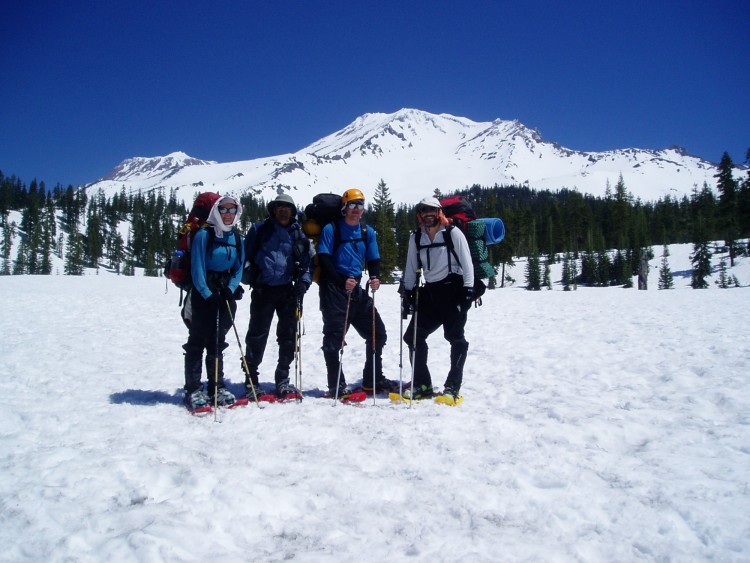
Celebrating in snowshoes after a successful ascent of Mount Shasta. Photo: Tim Peck and Doug Martland
Snowshoe Options For Mountaineering
For those interested in using snowshoes, check out a few options below- all of which offer aggressive traction and adequate flotation for those steep slopes on your next mountaineering adventure.
MSR Evo Ascent
The Evo Ascent, mentioned above, is a great lightweight option for the approach. It’s also the most budget ascent model of the MSR family. The plastic decking provides long-term durability and the aggressive toe crampons, along with steel traction rails provide the grip for steep terrain. Plus, a 3 strap binding is built for a diverse range of footwear and is glove-friendly for those cold days. Available in 22″ with a recommended load of up to 180 lbs.
MSR Lightning Ascent
MSR’s Lightning Ascent offers edge-to-edge grip providing some of the most aggressive traction on the market for challenging terrain. A heel lift bar helps alleviate muscle fatigue when ascending slopes, while the Paragon binding reduces pressure points with secure alignment. Expect a higher price point for this aluminum snowshoe, but it’s well worth the reliability of these snowshoes on the mountain. To increase floatation, the Lightning Ascent also has the option to add on a modular tail. Available in 22″, 25″ or 30″ with recommended loads up to 180-280 lbs.
Read More: The Claw Patrol: MSR Lightning Ascent Snowshoes Review
Redfeather Alpine
With a unique v-tail design, the aluminum Redfeather Alpine offers maneuverability on the mountain as the rip-stop vinyl decking withstands sub-zero temperatures. Plus, the Epic Binding features 3 easy-to-use ratchet straps for foot stability for a variety of boot types, which sit on a high-impact polymer studded plate. A heel lift bar helps with muscle fatigue while the aggressive front and rear powder coated crampons help prevent snow and ice build-up. Available in 25″, 30″, or 35″ with a recommended loads up to 175-220 lbs.
Read More: Snowshoes Designed for Everyone: Find Your Match
Tubbs Flex VRT
The Tubbs Flex VRT (Women’s) has flexible decking, which helps relieve stress on the muscles and joints when ascending. The unique Dynamic Fit binding combines an easy-to-use Boa closure for a precise fit, along with Eva foam padding to relieve pressure points. Additionally, the Viper 2.0 carbon steel toe crampon and 3D-curved traction rails offer excellent traction. Available in 24″ and 28″ with a recommended load between 160-190 lbs.
Atlas Montane
With its spring-loaded suspension, the Atlas Montane helps absorb impact while allowing natural and free foot movement. The All-Trac toe crampons and Traverse Trac side rails provide the grip needed to traverse and ascend. Furthermore, a heel lift bar helps relieve fatigue while the Nytex decking is flexible and durable for a worry-free and quiet outing. Available in 30″ and 35″ with recommended loads of 250-300 lbs.
With similar features to the Montane, Atlas has a woman’s specific model of the ‘shoe, the Atlas Elektra Montane. This snowshoe is built with a tapered tail and narrower frame to match a more narrow gait, but with the same great features to conquer those mountain slopes. Available in 23″ and 27″ with recommended loads of 160-200 lbs.
GV Mountain Extreme
Built like a mountaineering snowshoe, the GV Mountain Extreme has a unique decking design to prevent snow build-up on your trek. Toe and heel crampons offer grip on the slopes with a heel lift bar to reduce muscle fatigue. Plus, the Entech decking can resist temperatures as low as -50C, along with a flexible aluminum frame. The foot stays in place and fits comfortably with ratchet bindings, a textured footrest, and tapered tip binding. Available in 25″ and 30″ with recommended loads of 140-170 lbs.
Other Essential Equipment
Of course, snowshoes aren’t the only piece of equipment you’ll need for tackling the mountaineering trips on your tick list. Here’s some of the other gear you’ll need.
Ice Axe and Crampons
An ice ax and crampons (like Kahtoola Microspikes) are fundamental components of any mountaineering kit. They literally keep you attached to the mountain as you climb uphill. Before embarking on any mountaineering adventure, please be aware of how to use these winter mountaineering tools.
Avalanche Equipment
Depending on the terrain, avalanche preparedness may also be required. Bring along a beacon or transceiver, probe, and shovel, or you all together in this rescue package. Of course, you’ll also want to be trained on how to use them and how to spot avalanche warning signs and danger zones.
Read More: Avalanche Avoidance & FAQ
Climbing Equipment
A helmet, harness, and rope are three other critical pieces of mountaineering equipment. The helmet protects your head from rock or ice fall, while the harness and rope provide a rope team a degree of protection should one member fall and be unable to self-arrest. A harness and rope (and the knowledge to use them) are also essential if your route has any crevasses. And, if your route does have crevasses, having a crevasse rescue kit (pickets, cordelette, slings, carabiners, and a Petzl Micro Traxion Pulley) is essential.
Layers
Appropriate layers are also critical for mountaineering. Perhaps our favorite layer is the super-warm big puffy jacket that’s worn during all breaks and time in camp.
Read More: Winter Clothing Tips From A Snowshoe Guide
Did snowshoes provide a critical assist on a recent mountaineering trip? We want to hear about your experience with them in the mountains. Tell us in the comments!
This article was first published on February 23, 2020. It was most recently updated on November 14, 2021.
Read Next:
Whumphing and Mountain Snowshoe Adventures: Andrew Nugara’s World
Test Your Snowshoes: 5 Almost Easy To Climb Mountain Peaks
Avalanche Safety Basics for Snowshoers: Warning Signs and Danger Zones

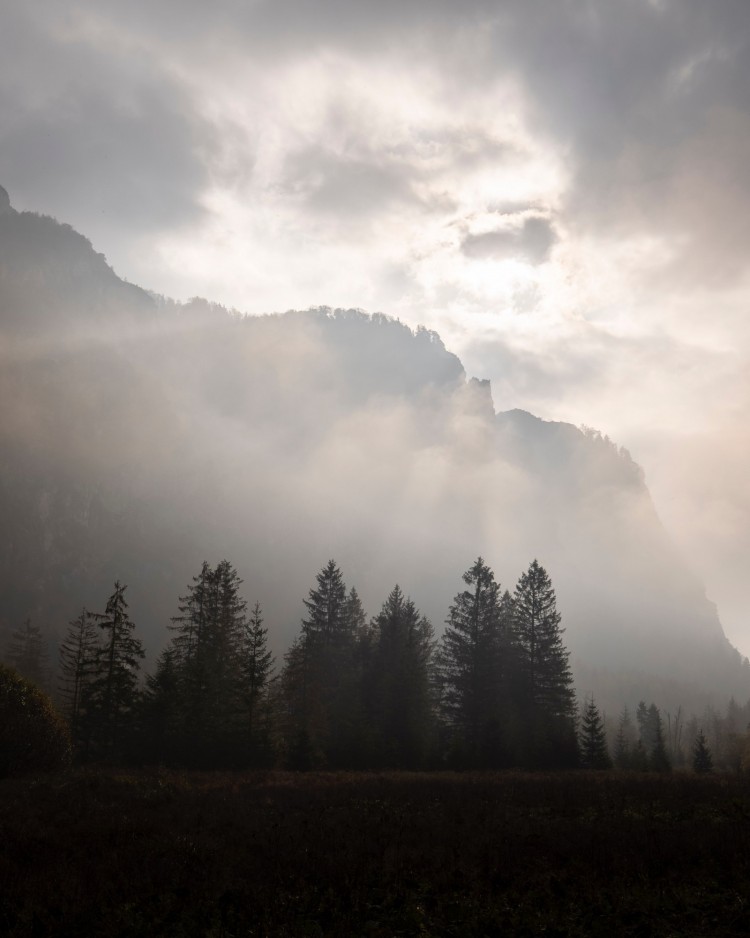
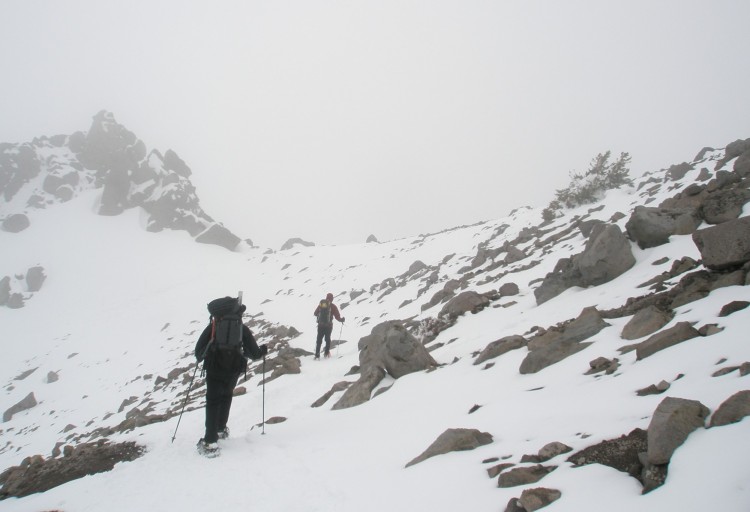
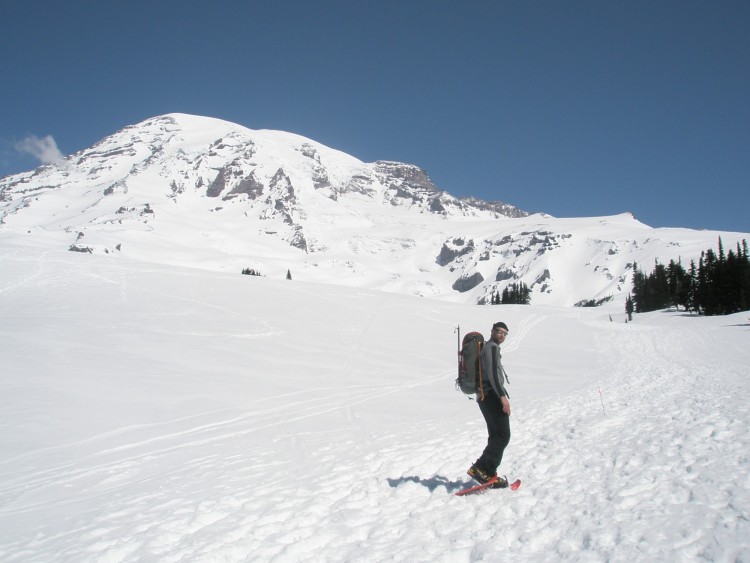
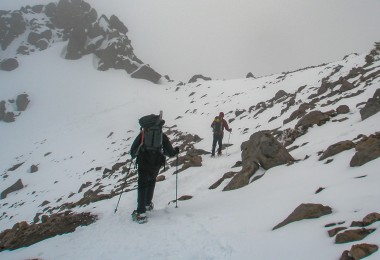
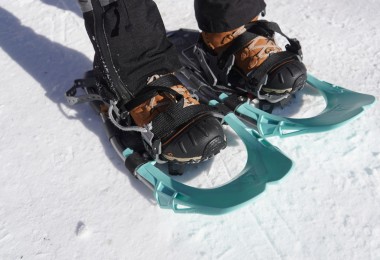
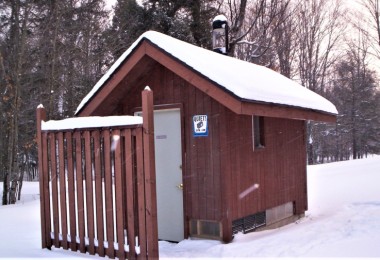


Leave a Comment